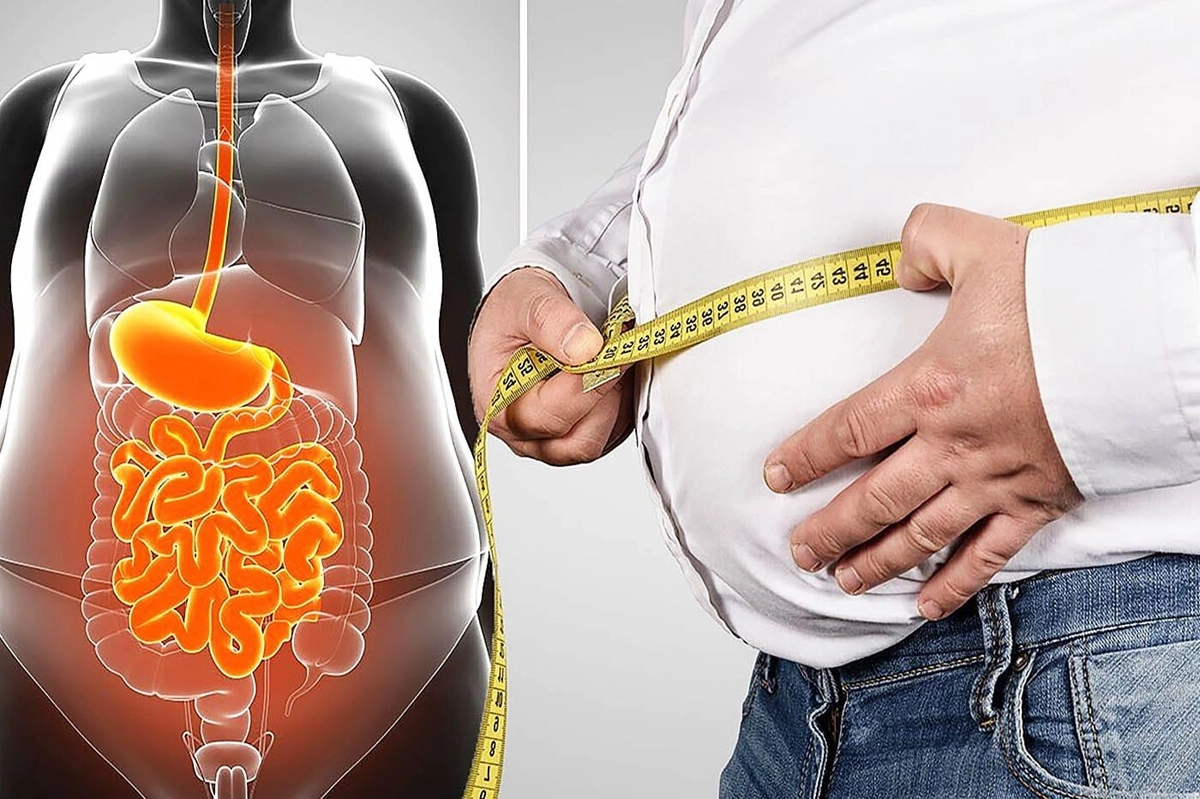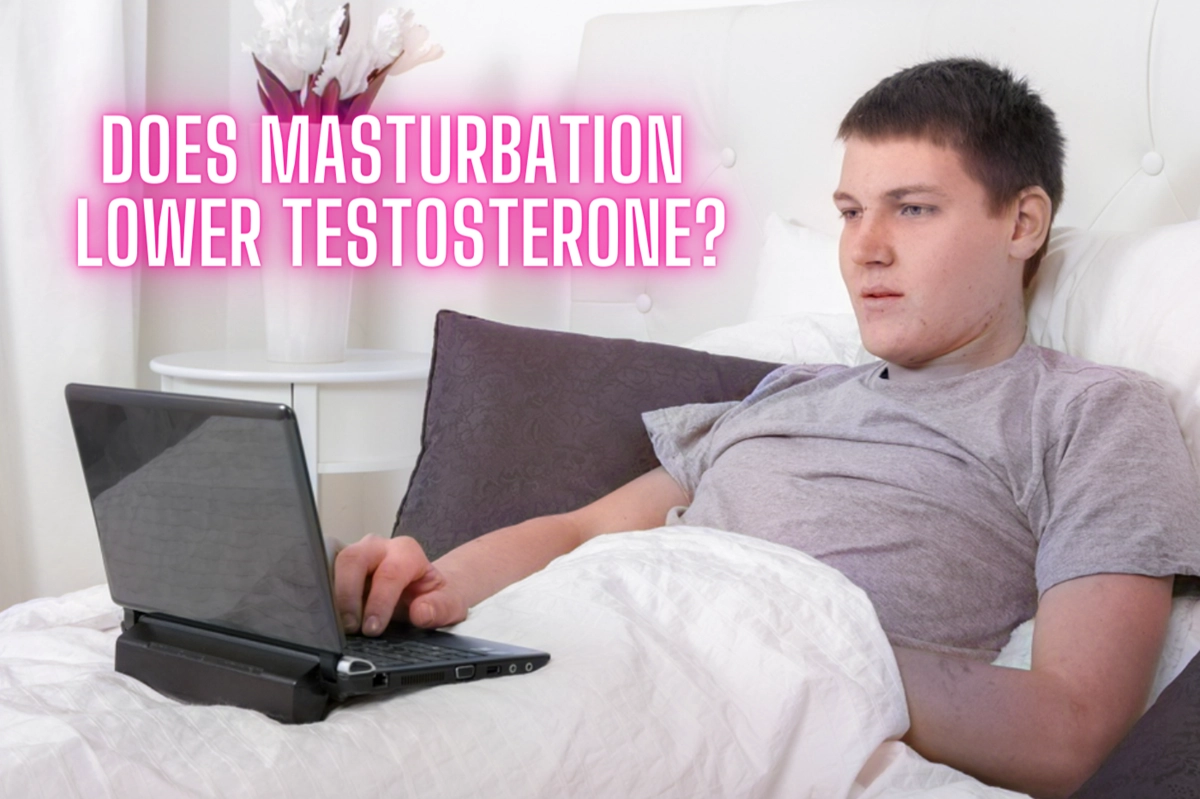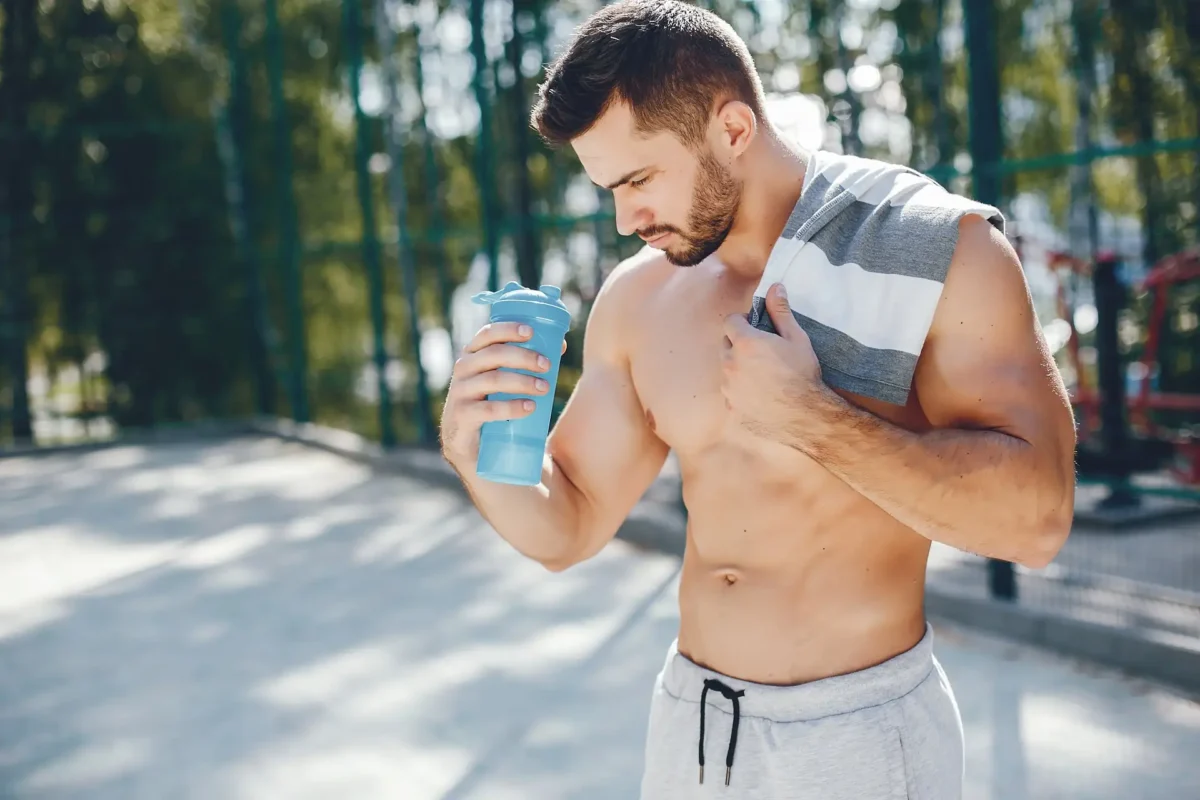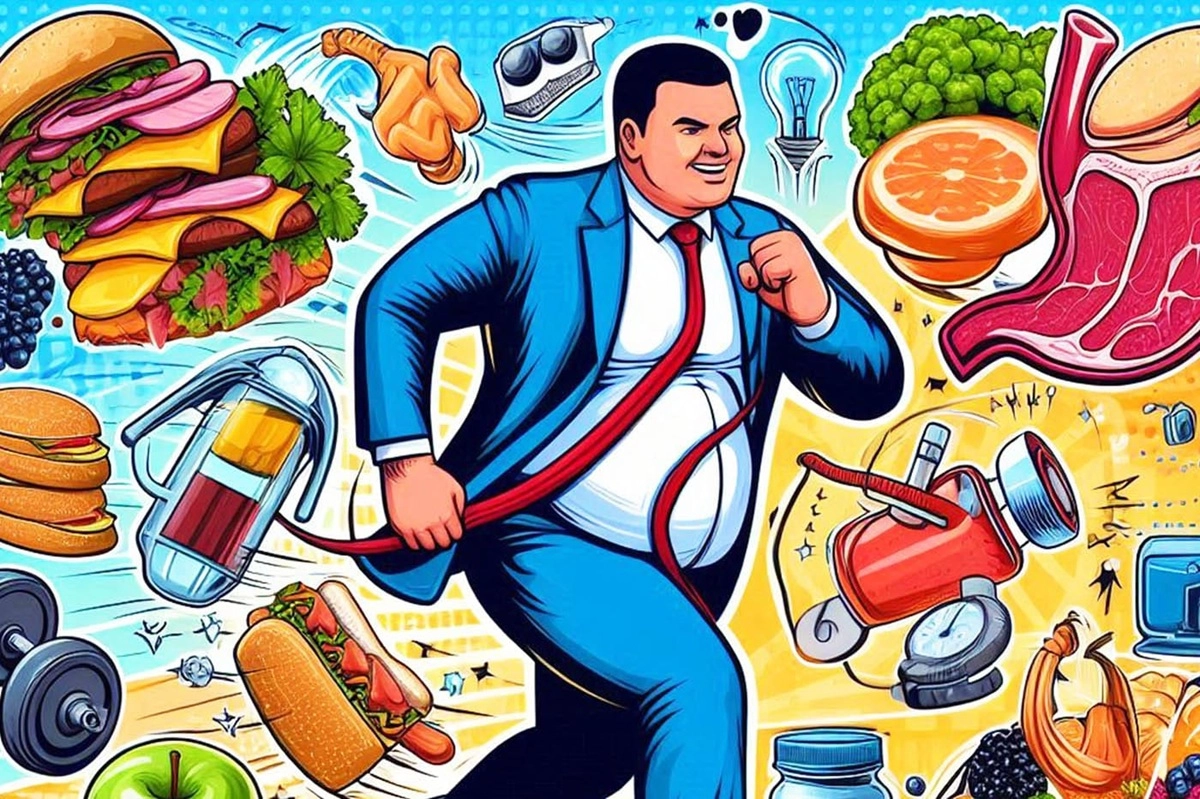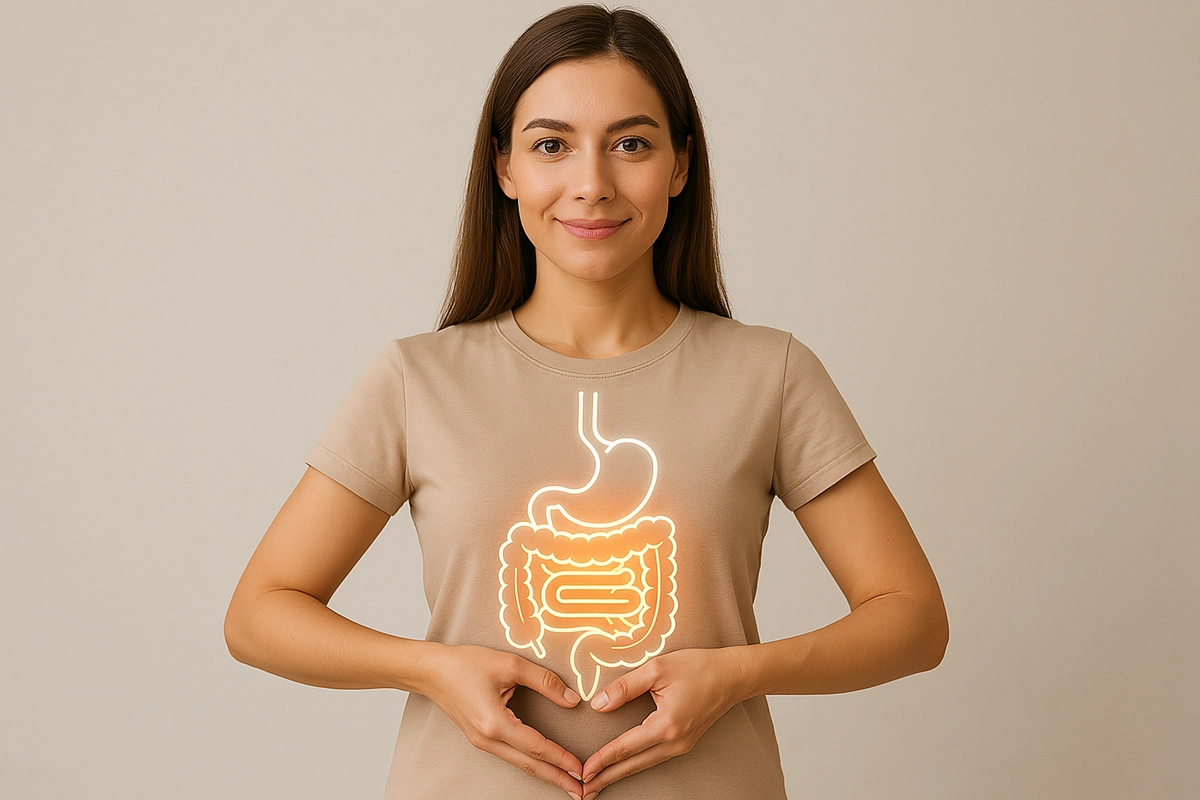You’ve probably noticed the concerning trend of “bubble gut” among bodybuilders and fitness enthusiasts – that protruding belly that persists even with visible abs.
While many attribute this condition solely to steroid use, the truth involves a complex mix of factors, including diet, training, and lifestyle choices. Whether you’re a competitive athlete or just someone passionate about fitness, understanding bubble gut’s causes and prevention can significantly impact your physique goals.
Let’s examine what Arnold would call “the battle of the bulging middle.”
What Is Bubble Gut?
Bubble gut is a condition where the lower abdomen becomes abnormally distended while abdominal muscles remain visible. It differs from typical fat gain or a beer belly.
Common in bodybuilding, it is often linked to performance-enhancing drugs and may cause aesthetic issues, digestive discomfort, and competitive scoring problems.
What Causes Bubble Gut?
Your bubble gut can develop from several lifestyle factors you must address for prevention and treatment.
If you’re struggling with this condition, it’s likely due to a combination of heavy substance use, poor food choices, overeating, physical inactivity, and chronic stress.
You’ll want to examine these potential causes in your daily routine, just as Arnold’s famous motto suggests—”everything is reps and sets,” meaning that each daily choice impacts your physique.
1. Heavy Substance Use
Many athletes seeking rapid muscle gains turn to performance-enhancing substances, but this path often leads to bubble gut development.
When you use anabolic steroids alongside human growth hormone (HGH), you’re risking more than just a bloated midsection. HGH increases muscle mass primarily through water retention while helping maintain gains and reducing belly fat.
The problem compounds when you add insulin intake to the mix. While insulin helps amino acids enter muscle tissue more efficiently, it expands your stomach to accommodate increased food consumption.
HGH stimulates insulin-like growth factor-1 (IGF-1), driving tissue growth throughout your body, including unwanted growth in your midsection. These side effects can permanently alter your physique in ways that contradict the aesthetic you’re working to achieve.
2. Poor Eating Choices
When poor dietary choices become a daily habit, they can trigger the dreaded bubble gut effect through digestive stress and systemic inflammation.
Your eating patterns play an essential role in developing bubble gut symptoms, especially when you consume excessive amounts of processed foods. Those quick and convenient meals might save time, but they flood your digestive system with low-quality calories that your body struggles to process efficiently.
Fast food, frozen dinners, and pizza are common culprits that can lead to immediate discomfort and long-term consequences.
When you regularly overload your system with high-calorie diets full of processed ingredients, you’re likely to experience a belly ache and visible stomach distention. The combination of poor food quality and excessive portions creates the perfect storm for developing that characteristic bubble gut appearance.
3. Overeating
Beyond the quality of food choices, portion control is a significant factor in bubble gut development. When you regularly consume excess amounts of food, even healthy options, you overwhelm your digestive tract and set yourself up for chronic gas syndromes.
Your eating speed also plays an important role. If you rush through meals, you’re swallowing more air and food, leading to uncomfortable gas, pain, and bloating. This habit and overeating create adverse ramifications that extend beyond temporary discomfort.
To prevent bubble gut, you’ll need to:
- Monitor portion sizes at each meal
- Space out your meals throughout the day
- Take time to chew thoroughly
- Stop eating before you feel full
- Allow proper digestion between meals
4. Physical Inactivity
Physical inactivity represents one of the leading contributors to bubble gut development.
When you’re inactive, your body doesn’t properly utilize the extra calories you consume, leading to fat storage and potential insulin resistance. This can intensify the physical effects associated with a bodybuilder’s belly, including abdominal pain and digestive issues.
Regular exercise plays an essential role in preventing a bubble gut by helping your body process nutrients more efficiently.
You don’t need to train like Arnold in his prime—even a simple 15-minute walk after meals can make a difference. The key is staying consistently active throughout the week, which helps maintain proper metabolism and reduces the risk of developing that unwanted distended appearance.
5. Stress
Stress can severely affect your body’s ability to maintain a healthy midsection. When you’re under chronic stress, your digestive enzymes don’t function effectively, leading to stomach problems and excessive distension in your abdominal area.
Even Arnold, known for his mental toughness, has emphasized the importance of stress management for maintaining a balanced physique.
Your gut’s microbiome is particularly vulnerable to stress, and prolonged exposure can create a destructive cycle. Many people turn to food for stress relief, consuming extra calories, contributing to bubble gut development.
To combat this, you must prioritize stress reduction while maintaining a high-fiber diet. Remember that stress management isn’t just about mental well-being—it’s vital to preventing that unwanted distended appearance in your midsection.
Side Effects of Bubble Gut
As your bubble gut expands, you’ll notice that your digestion isn’t working as efficiently as it should, leading to uncomfortable bloating and potential nutrient absorption issues.
The pressure from an enlarged abdomen can compress your internal organs and impact your nervous system, potentially causing nerve damage over time.
If you’re experiencing these side effects, addressing the root causes of your bubble gut is essential before these complications become more severe.
#Improper Digestion
When your digestive system can’t function properly due to bubble gut, you’ll notice significant disruptions in your daily routine and workout performance.
Improper digestion affects how your body processes essential nutrients and eliminates waste, making it challenging to maintain consistent energy levels during training.
When dealing with bubble guts, your body’s struggle with food intolerances becomes more pronounced, leading to chronic symptoms that can derail your fitness progress.
You’ll make more frequent bathroom trips as your digestive health deteriorates.
To combat these issues, focus on consuming gut-friendly foods and timing your meals appropriately.
#Nerve Damage
The nerve damage linked to bubble gut creates serious health complications beyond digestive issues.
When insulin resistance develops from drug use, it can trigger nerve damage throughout your body, particularly affecting your limbs. This condition is especially concerning for the bodybuilding community, as it often leads to muscle atrophy – the exact opposite of what you’re working to achieve.
What’s particularly troubling is how these health conditions can spiral.
The nerve damage doesn’t just impact your muscles; it can manifest in various symptoms like cold sweats, anxiety, chest tightness, and vision problems.
If you’re experiencing any of these warning signs, addressing them immediately is essential.
Left untreated, nerve damage can worsen, leading to further stomach distention and potentially permanent muscle deterioration.
Ways to Get Rid of Bubble Gut?
To combat bubble gut, you’ll need to take a multifaceted approach, starting with reducing drug use and monitoring your eating habits while staying properly hydrated.
Managing stress levels is essential, as elevated cortisol can contribute to digestive issues and bloating.
Adding prebiotics and probiotics to your daily routine can help restore balance to your gut microbiome, much like Arnold’s disciplined approach to supplementation during his competitive years.
1. Decrease Drug Use
Reducing or eliminating HGH and insulin intake is the most effective strategy to combat bubble gut development.
If you’re using high-dose anabolic steroids or insulin-like growth factor, you’ll need to decrease drug use considerably to address your bubbly gut concerns.
Let’s be clear – there’s no shortcut around this solution.
You must work with medical professionals to create a safe plan for reducing these substances.
While personal trainers can help with exercise programming, proper medical attention is essential when adjusting performance-enhancing protocols.
Consider consulting a sports medicine specialist who can:
- Evaluate your current drug protocols
- Create a tailored reduction plan
- Design a sustainable nutrition strategy
- Monitor your progress
- Prevent potential complications
2. Control Your Eating
While attacking bubble gut through drug reduction is essential, controlling your eating habits is equally important in managing this condition.
Focusing on both the quantity and speed of your food consumption will reduce symptoms of bubble gut and promote normal digestion.
Start by cutting back on excess calories, as overconsumption can strain your digestive system. When you eat, slow down your pace to give your body time to process the food properly.
Consider implementing elimination diets to identify which healthy foods work best with your system. You’ll want to avoid foods that cause bloating while increasing your intake of easily digestible options.
This personalized approach to nutrition will help minimize digestive stress and reduce the appearance of bubble gut.
3. Hydration
Proper hydration is a cornerstone in the battle against bubble gut, and water plays an essential role in maintaining healthy digestion.
To combat the discomfort of bubble guts and gas-bloat syndrome, you’ll want to prioritize your water intake throughout the day. While plain water might seem tedious, you can make it more appealing by adding a squeeze of lemon or a pinch of salt.
Though juices in moderation can contribute to your daily fluid needs, it’s best to avoid carbonated beverages, as they’ll only worsen the short-term effects of bloating.
Key hydration strategies:
- Drink water consistently throughout the day
- Add lemon or salt for a better taste
- Include moderate amounts of tea or juice
- Skip carbonated drinks that expand your stomach
4. Manage Stress Levels
Stress management is essential in preventing and treating bubble gut symptoms. When stressed, the digestive system suffers, leading to bloating and discomfort.
To manage stress levels effectively, incorporate these proven techniques into your daily routine:
- Practice meditation for 10-15 minutes daily
- Attend yoga classes 2-3 times per week
- Lift weights regularly to release endorphins
- Listen to calming music during rest periods
Creating a balanced environment through these activities helps reduce cortisol levels and promotes better digestive function.
Just as Arnold always emphasized the mind-muscle connection, maintaining mental clarity directly impacts your physical state.
Combine these stress-reduction methods with improved nutrition to maximize results. Remember, a calm mind leads to a healthier gut and better overall fitness progress.
4. Prebiotics and Probiotics
Incorporating both prebiotics and probiotics into your daily nutrition plan can significantly improve your digestive health and combat bubble gut.
These beneficial bacteria work together to regulate your gut’s microbial metabolites, which are essential in managing metabolic disease symptoms and overall digestive health.
Consuming foods rich in both prebiotics (like garlic, onions, and bananas) and probiotics (such as yogurt, kefir, and fermented vegetables) can enhance your dietary habits.
If you’re currently experiencing bubble gut symptoms, taking high-quality supplements can help restore balance to your digestive system.
Prebiotics are food that feeds your good gut bacteria, while probiotics are the beneficial bacteria themselves.
Together, they create a powerhouse combination that can prevent and reduce uncomfortable bloating and digestive issues.
5. Medical Help
When symptoms of bubble gut persist despite dietary changes, seeking professional medical guidance becomes crucial for identifying and treating underlying causes. Your doctor can evaluate your current condition and common symptoms to determine if an underlying medical issue requires attention.
During your consultation, be prepared to discuss your:
- Daily nutrition habits
- Exercise routine
- Lifestyle habits
- Digestive concerns
- Medication history
Working with a healthcare provider allows you to make informed choices about your treatment plan.
While general guidelines can help prevent bubble gut, your doctor’s expertise guarantees you’re addressing your specific needs. They’ll consider factors like:
- Gut health markers
- Hormone levels
- Food sensitivities
- Stress management
- Sleep patterns
To Wrap It All Up
You now have all the tools needed to fight bubble gut like Arnold fought for Mr. Olympia titles. By following proper nutrition, managing stress, and maintaining smart exercise habits, you’ll transform your distended belly into a fortress of strength.
Your gut health is worth a million times more than any shortcut, so follow these guidelines and you’ll be well on your way to achieving that classic, aesthetic physique you’re after.
FAQs
Why Do Bodybuilders Get a Bubble Gut?
Bodybuilders get a bubble gut due to excessive use of growth hormone, insulin, and high-calorie diets. These factors enlarge internal organs and cause abdominal distension, even with low body fat. The condition is common among competitive athletes who focus on rapid muscle gain.
How to Get Rid of Bubble Gut in Bodybuilding?
Get rid of bubble gut in bodybuilding by reducing carb intake, limiting insulin and growth hormone use, and focusing on core training. Maintain a clean, nutrient-rich diet and avoid overeating. Regulate digestion with hydration and probiotic support.
How Do You Get Bubble Gut?
You get bubble gut from chronic use of growth hormone, insulin, poor dietary habits, and overtraining. These stressors cause the abdomen to swell despite low external fat. This results in a visibly distended midsection often seen in competitive bodybuilders.
How to Fix Bubble Guts?
Fix bubble guts by drinking more water, avoiding carbonated drinks, and eating smaller, frequent meals. Add probiotics to improve gut health, avoid fatty foods and artificial sweeteners, and stay physically active to support digestion.
What Is a Bubble Gut Caused By?
A bubble gut is caused by prolonged use of growth hormone, insulin, and high-calorie diets. These factors enlarge internal organs and stretch the abdominal wall, leading to visible distension even in lean individuals, especially bodybuilders.


